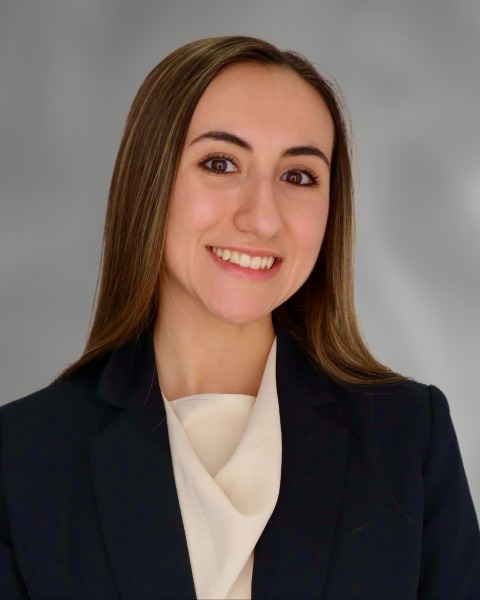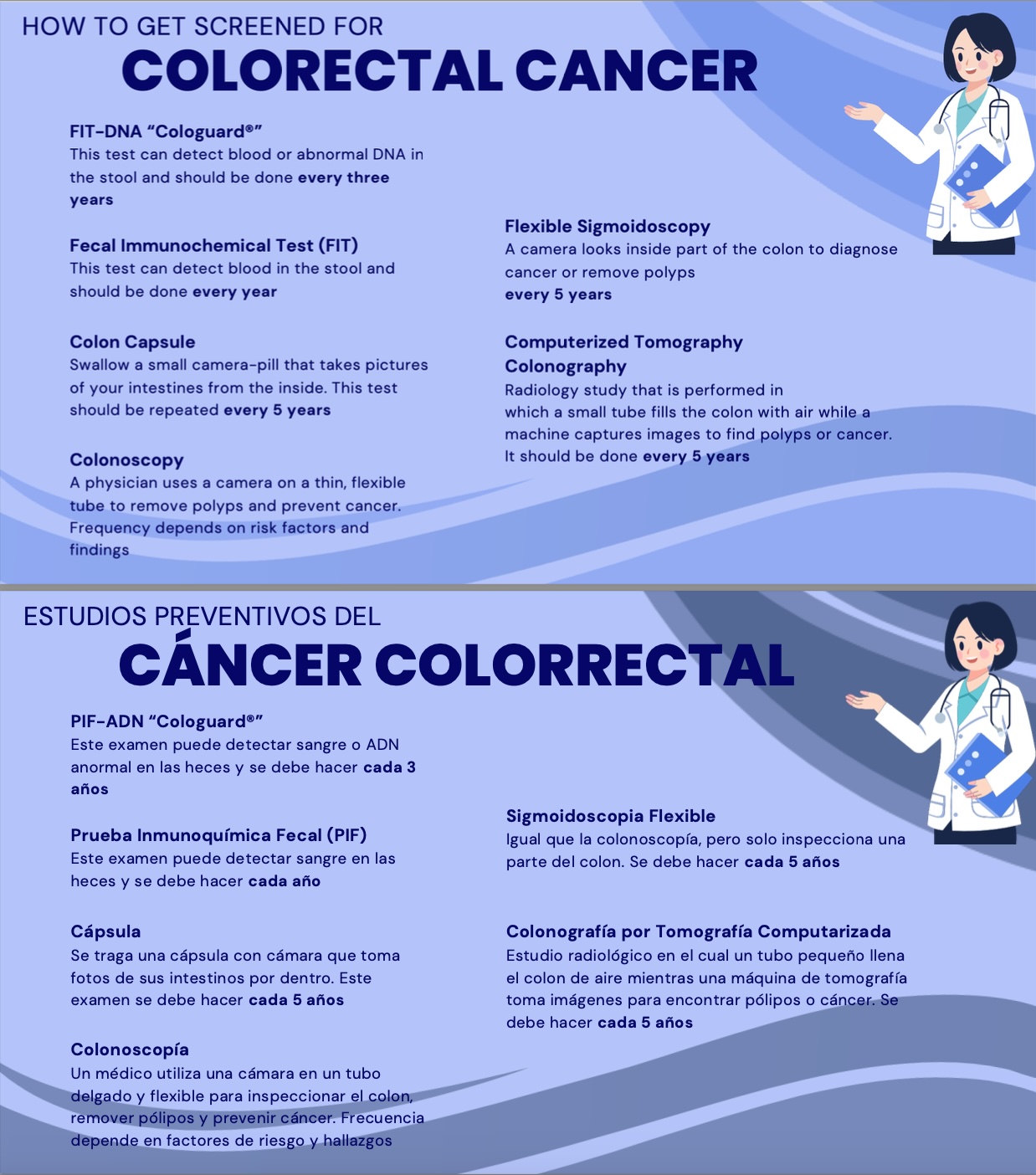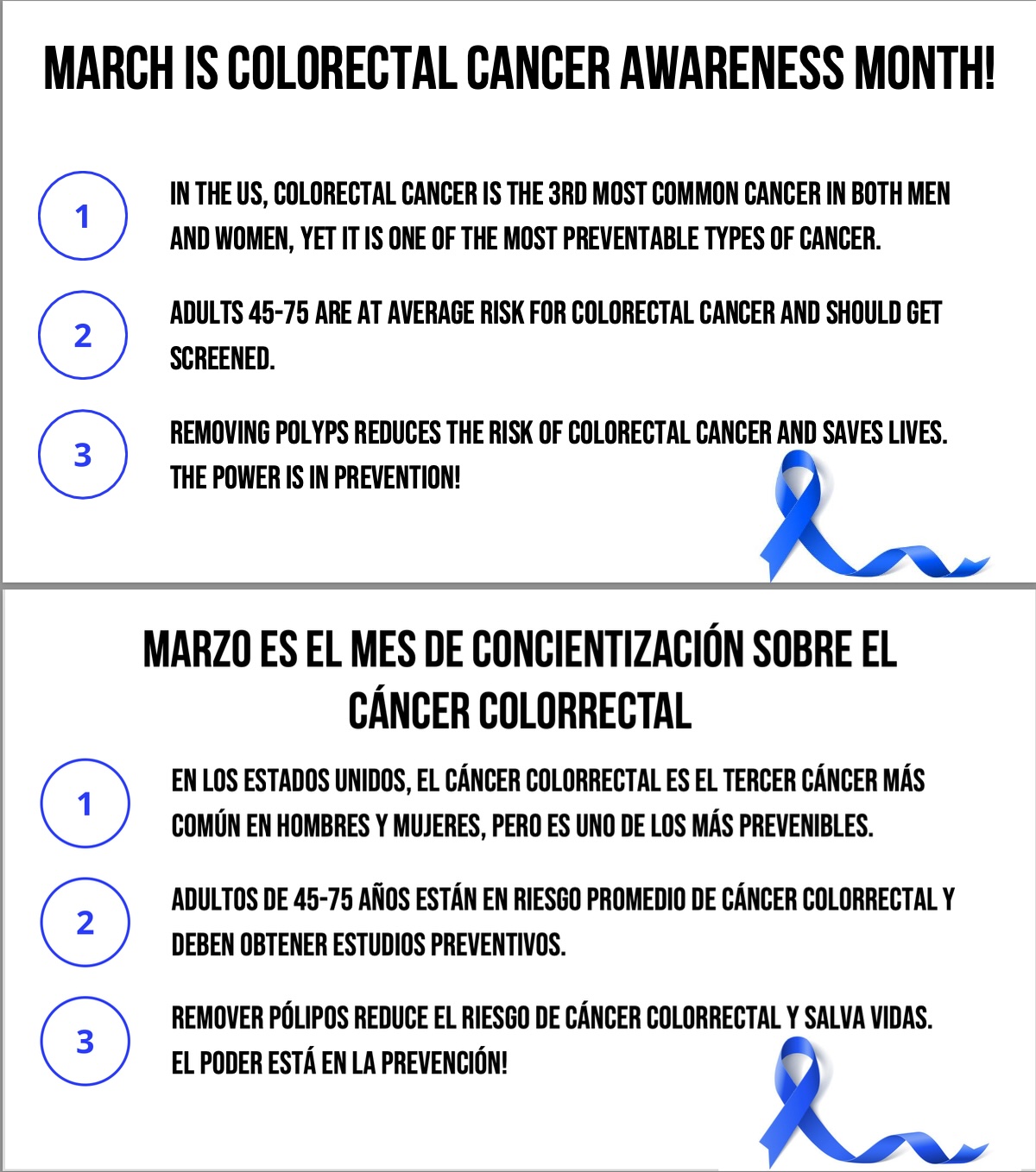Monday Poster Session
Category: Colorectal Cancer Prevention
P2647 - Language and Messaging: Engaging Non-English Speakers in Colon Cancer Prevention Using Health Fair Posters
Monday, October 27, 2025
10:30 AM - 4:00 PM PDT
Location: Exhibit Hall

Katherine Rangoussis, BS, MS
George Washington University School of Medicine and Health Sciences
Washington, DC
Presenting Author(s)
Katherine Rangoussis, BS, MS1, Ivan Berezowski, MD1, Maanvi Vij, BS1, Valerie S. Stark, MD, MPH2, Susie J. Park, MD1, Mrudula Bandaru, MD2, Simran Gupta, MD3, Romy Chamoun, MD1, Laxmikausthubha Yaratha, MD1, Zeina Bani Hani, MBBS4, Pavan Vemulakonda, MD1, Ahmed Ebeid, MD5, Abdelrhman Refaey, MD3, Kris Kokoneshi, BA1, Lucas Miecho. Heilbroner, BA1, Athanasios S. Naum, BS1, Omar K. Abu-Ghannam, BS1, Maxwell S. Madani, BA1, Liza Khutsishvili, BS6, Marie L. Borum, MD, EdD, MPH, FACG3
1George Washington University School of Medicine and Health Sciences, Washington, DC; 2Department of Medicine, George Washington University School of Medicine and Health Sciences, Washington, DC; 3Division of Gastroenterology and Liver Disease, Department of Medicine, George Washington University School of Medicine and Health Sciences, Washington, DC; 4George Washington University, Washington, DC; 5Transplant Institute, Department of Surgery, George Washington University School of Medicine and Health Science, Washington, DC; 6George Washington School of Medicine and Health Sciences, Arlington, VA
Introduction: Colorectal cancer (CRC) disproportionately affects marginalized communities in the US, including racial minorities, those of lower socioeconomic status, and non-English speakers. Non-English speakers have significantly lower rates of CRC screening in the US. Poster messaging and information provided in patients’ preferred language have been reported to improve adherence to medical recommendations. This study evaluated preferences for health messaging at a community health fair.
Methods: University health care providers (HCPs) and an urban community center available to Spanish-speaking immigrants collaboratively planned a health fair to improve CRC awareness and encourage screening. Educational brochures and posters in English and Spanish on CRC and screening were available. Poster 1 had a plain white background with 3 facts about CRC and prevention. Poster 2 had a blue background with a cartoon physician, and a brief description of 6 CRC screening methods. Both of the posters had a Spanish translation. Participants completed an anonymous survey that included demographics, preferred language and preference for informational format. Statistical analysis was completed using Fisher Exact Test with significance set at p< 0.05.
Results: All 54 health fair participants (27 male, 26 female, 1 did not report gender) completed the survey. 25 (46.3%) identified as Black, 20 (37%) Hispanic, 6 (11.1%) white, 1 Asian (1.9%) and 2 (3.7%) did not report race / ethnicity. 33 (61%) stated that English and 16 (29%) stated the Spanish was their primary language. 43 (80%) surveys were completed in English and 11 (20%) in Spanish. Posters compared to brochures were the preferred method for CRC messaging (n=42 vs n=5, respectively; p=0.0001). There was no significant difference between participants’ primary language and educational material preference. There was a statistically significant difference (p=0.0001) in the preference for Poster 1 (n=32; 68.1%) compared to Poster 2 (n=10; 21.3%). Hispanics preferred educational materials in Spanish (p< 0.00001) and Spanish-speaking HCP (p< 0.00001).
Discussion: The use of educational materials and effective messaging can be a powerful tool in raising awareness and increasing prevention of CRC. This study emphasizes the need for both effective messaging through the use of eye-catching posters, as well as the need for language inclusivity with educational posters and brochures. Language preference communication may be a factor in addressing CRC screening disparities.

Figure: Poster 1 at the community health fair, in both English and Spanish.

Figure: Poster 2 at the community health fair, in both English and Spanish.
Disclosures:
Katherine Rangoussis indicated no relevant financial relationships.
Ivan Berezowski indicated no relevant financial relationships.
Maanvi Vij indicated no relevant financial relationships.
Valerie Stark indicated no relevant financial relationships.
Susie Park indicated no relevant financial relationships.
Mrudula Bandaru indicated no relevant financial relationships.
Simran Gupta indicated no relevant financial relationships.
Romy Chamoun indicated no relevant financial relationships.
Laxmikausthubha Yaratha indicated no relevant financial relationships.
Zeina Bani Hani indicated no relevant financial relationships.
Pavan Vemulakonda indicated no relevant financial relationships.
Ahmed Ebeid indicated no relevant financial relationships.
Abdelrhman Refaey indicated no relevant financial relationships.
Kris Kokoneshi indicated no relevant financial relationships.
Lucas Heilbroner indicated no relevant financial relationships.
Athanasios Naum indicated no relevant financial relationships.
Omar Abu-Ghannam indicated no relevant financial relationships.
Maxwell Madani indicated no relevant financial relationships.
Liza Khutsishvili indicated no relevant financial relationships.
Marie Borum indicated no relevant financial relationships.
Katherine Rangoussis, BS, MS1, Ivan Berezowski, MD1, Maanvi Vij, BS1, Valerie S. Stark, MD, MPH2, Susie J. Park, MD1, Mrudula Bandaru, MD2, Simran Gupta, MD3, Romy Chamoun, MD1, Laxmikausthubha Yaratha, MD1, Zeina Bani Hani, MBBS4, Pavan Vemulakonda, MD1, Ahmed Ebeid, MD5, Abdelrhman Refaey, MD3, Kris Kokoneshi, BA1, Lucas Miecho. Heilbroner, BA1, Athanasios S. Naum, BS1, Omar K. Abu-Ghannam, BS1, Maxwell S. Madani, BA1, Liza Khutsishvili, BS6, Marie L. Borum, MD, EdD, MPH, FACG3. P2647 - Language and Messaging: Engaging Non-English Speakers in Colon Cancer Prevention Using Health Fair Posters, ACG 2025 Annual Scientific Meeting Abstracts. Phoenix, AZ: American College of Gastroenterology.
1George Washington University School of Medicine and Health Sciences, Washington, DC; 2Department of Medicine, George Washington University School of Medicine and Health Sciences, Washington, DC; 3Division of Gastroenterology and Liver Disease, Department of Medicine, George Washington University School of Medicine and Health Sciences, Washington, DC; 4George Washington University, Washington, DC; 5Transplant Institute, Department of Surgery, George Washington University School of Medicine and Health Science, Washington, DC; 6George Washington School of Medicine and Health Sciences, Arlington, VA
Introduction: Colorectal cancer (CRC) disproportionately affects marginalized communities in the US, including racial minorities, those of lower socioeconomic status, and non-English speakers. Non-English speakers have significantly lower rates of CRC screening in the US. Poster messaging and information provided in patients’ preferred language have been reported to improve adherence to medical recommendations. This study evaluated preferences for health messaging at a community health fair.
Methods: University health care providers (HCPs) and an urban community center available to Spanish-speaking immigrants collaboratively planned a health fair to improve CRC awareness and encourage screening. Educational brochures and posters in English and Spanish on CRC and screening were available. Poster 1 had a plain white background with 3 facts about CRC and prevention. Poster 2 had a blue background with a cartoon physician, and a brief description of 6 CRC screening methods. Both of the posters had a Spanish translation. Participants completed an anonymous survey that included demographics, preferred language and preference for informational format. Statistical analysis was completed using Fisher Exact Test with significance set at p< 0.05.
Results: All 54 health fair participants (27 male, 26 female, 1 did not report gender) completed the survey. 25 (46.3%) identified as Black, 20 (37%) Hispanic, 6 (11.1%) white, 1 Asian (1.9%) and 2 (3.7%) did not report race / ethnicity. 33 (61%) stated that English and 16 (29%) stated the Spanish was their primary language. 43 (80%) surveys were completed in English and 11 (20%) in Spanish. Posters compared to brochures were the preferred method for CRC messaging (n=42 vs n=5, respectively; p=0.0001). There was no significant difference between participants’ primary language and educational material preference. There was a statistically significant difference (p=0.0001) in the preference for Poster 1 (n=32; 68.1%) compared to Poster 2 (n=10; 21.3%). Hispanics preferred educational materials in Spanish (p< 0.00001) and Spanish-speaking HCP (p< 0.00001).
Discussion: The use of educational materials and effective messaging can be a powerful tool in raising awareness and increasing prevention of CRC. This study emphasizes the need for both effective messaging through the use of eye-catching posters, as well as the need for language inclusivity with educational posters and brochures. Language preference communication may be a factor in addressing CRC screening disparities.

Figure: Poster 1 at the community health fair, in both English and Spanish.

Figure: Poster 2 at the community health fair, in both English and Spanish.
Disclosures:
Katherine Rangoussis indicated no relevant financial relationships.
Ivan Berezowski indicated no relevant financial relationships.
Maanvi Vij indicated no relevant financial relationships.
Valerie Stark indicated no relevant financial relationships.
Susie Park indicated no relevant financial relationships.
Mrudula Bandaru indicated no relevant financial relationships.
Simran Gupta indicated no relevant financial relationships.
Romy Chamoun indicated no relevant financial relationships.
Laxmikausthubha Yaratha indicated no relevant financial relationships.
Zeina Bani Hani indicated no relevant financial relationships.
Pavan Vemulakonda indicated no relevant financial relationships.
Ahmed Ebeid indicated no relevant financial relationships.
Abdelrhman Refaey indicated no relevant financial relationships.
Kris Kokoneshi indicated no relevant financial relationships.
Lucas Heilbroner indicated no relevant financial relationships.
Athanasios Naum indicated no relevant financial relationships.
Omar Abu-Ghannam indicated no relevant financial relationships.
Maxwell Madani indicated no relevant financial relationships.
Liza Khutsishvili indicated no relevant financial relationships.
Marie Borum indicated no relevant financial relationships.
Katherine Rangoussis, BS, MS1, Ivan Berezowski, MD1, Maanvi Vij, BS1, Valerie S. Stark, MD, MPH2, Susie J. Park, MD1, Mrudula Bandaru, MD2, Simran Gupta, MD3, Romy Chamoun, MD1, Laxmikausthubha Yaratha, MD1, Zeina Bani Hani, MBBS4, Pavan Vemulakonda, MD1, Ahmed Ebeid, MD5, Abdelrhman Refaey, MD3, Kris Kokoneshi, BA1, Lucas Miecho. Heilbroner, BA1, Athanasios S. Naum, BS1, Omar K. Abu-Ghannam, BS1, Maxwell S. Madani, BA1, Liza Khutsishvili, BS6, Marie L. Borum, MD, EdD, MPH, FACG3. P2647 - Language and Messaging: Engaging Non-English Speakers in Colon Cancer Prevention Using Health Fair Posters, ACG 2025 Annual Scientific Meeting Abstracts. Phoenix, AZ: American College of Gastroenterology.
